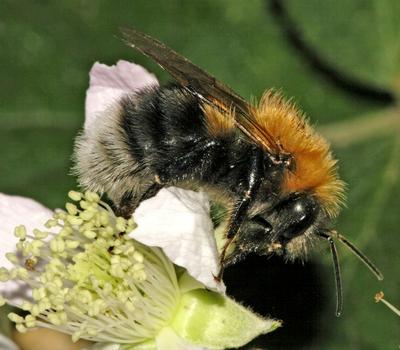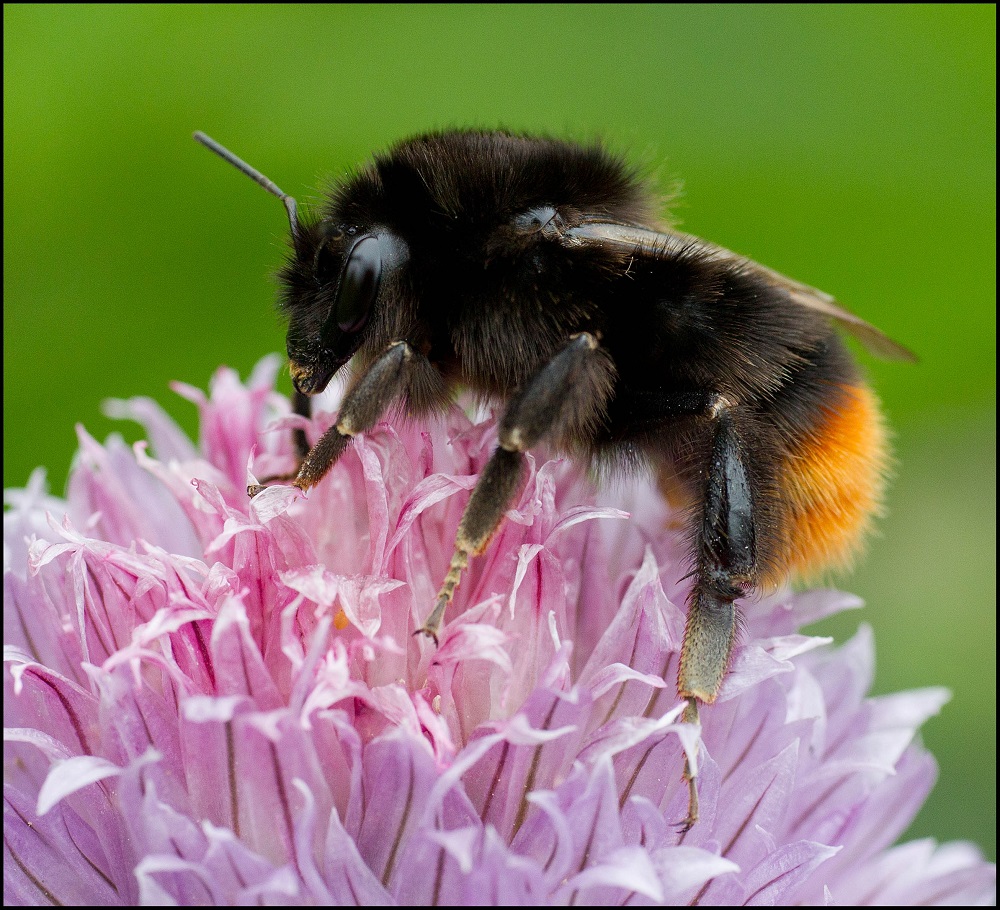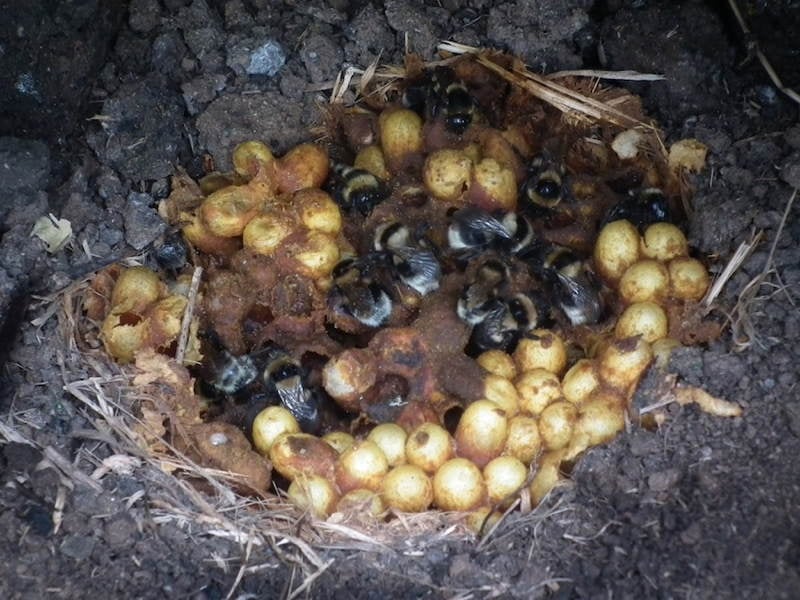The Old BeeKeeper
The Bumblebee - Genus:Bombus
 |
Like Apis Melifera(the honey bee), the genus bombus (the bumblebee) is actually a sub-genus of the genus Apidae(long-tounged bees), itself a sub-genus of Anthrophila(bees).[Wikapedia:-Bees] Whilst there are 250 species of Bumblebee world wide [Wikapedia:-Bumblebees], only 23 of these are found in the UK, and of these only 8 are common. Until circa 2015 the number of UK species of Bumblebee had declined to 22, with one of the native species being classified extinct. At about this time Bombus Hypnorum(Tree Bumblebee) had been making large in roads into southern and central England having migrated from the continent in the early 2000's. Since 2018, it has been reclassified as a native species, as it is now prevalent across most of England and Wales [Bumblebee Conservation Trust]. The principle difference between Bumblebees, Solitary bees, and Honeybees, is not size, as they can be both bigger and smaller than both, is that they are furry, which is what provides them with the insulation needed to fly at lower temperatures, and in rougher weather conditions than both other species. The principle means of identifying the species of Bumblebee is by the colour of its tail, being generally grouped into 3 colours, white, red and ginger. I'm not going to reproduce the very good Bumblebee Conservation Trust Species Identification Guide here. Just click on the text and follow the link. The lifecycle of Bumblebees is similar to that of Solitary bees, in that Bumblebees overwinter as mated queens, emerging in spring to locate a new nest, and build a new colony. Like honey bees they are also social insects, but unlike honey bees the peak size of the colony varies between 50 and 400 individuals depending on the species and the time of the year. Having founded a new colony, the queen lays her first batch of eggs then goes out to forage. When the eggs hatch the new workers take over foraging duties, and the queen remains behind to lay more eggs. After 10 to 12 weeks the colony is strong enough to reproduce and new queens and drones (male bees) are raised. The drones leave the nest to find another nest with virgin queens, and this flurry of activity outside a bumblebee nest is sometimes mistaken for a swarm, although the 30 to 40 bee congregation is nothing compared to the (average) 10,000 bees in a honey bee swarm. Having mated the new queens either go off to found a new colony or find somewhere dry and secure to overwinter. Depending on the location in the UK and the bumblebee species they will often raise 2 sets of brood in a year, especially in the milder conditions in the south of the UK. This means that whilst a species used to only be seen from March to Mid July, they are often to be seen from March to October. Generally Bumbleebees are much less agressive and much less likely to sting than honey bees, the exception being Tree Bumblebees which dislike disturbance and human traffic near their nests. The majority of bumblebee species nest underground in abandoned rodent nests, the exceptions being Tree Bumblebees which have a preference for bird boxes and soffets, and Red Tailed Bumblebees, which also exhibit a preference for above ground nest sites. Bumblebees are often encounted nesting under decking or under
sheds. Their nests are far more fragile than those of honeybees and
should not be moved unless absolutely necessary, as frequently
attempting to move a nest results in its destruction. Bumblebees have suffered a significant decline in the last 10 years, primarily due to both climate change and the impact of neonicitoid pesticides. Whilst it used to be common for Bumblebees to successfully raise 8 to 12 queens per brood cycle, in recent years this has declined to (on average) 3 to 4. [Source National Honey Show Lecture-Proffessor Dave Goulson, Sussex University]. If you want to know more about Bumblebees then I highly recommend the Bumblebee Conservation Trusts Bumblebees - An Introduction.
|
 |
 |
 |
|
 |
 |
|
 |
 |